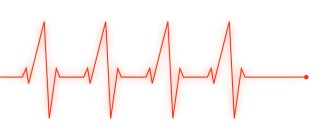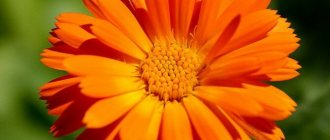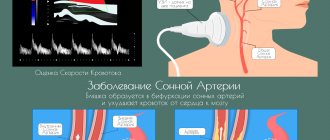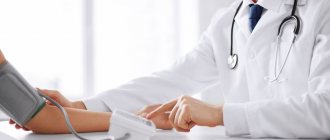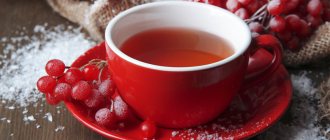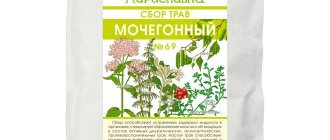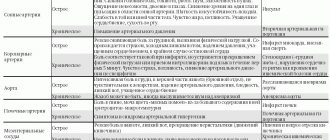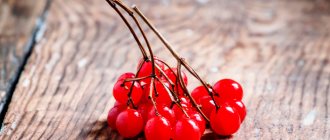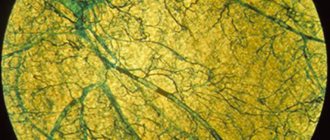During a hospital stay, treatment of a patient with a heart attack should consist of strict adherence to all doctor's recommendations. Folk and home remedies are not able to help during this period and, moreover, they are strictly prohibited. It is better to postpone them until later, for the period after discharge from the hospital. From the moment the patient is at home, a fairly long period of rehabilitation begins, during which medical prescriptions can be supplemented with folk remedies. However, is such an addition to therapy advisable?
Classification of heart attack
There are several classifications of the disease.
By stages of development there are:
First stage heart attack . This is the stage of the onset of myocardial damage. From the appearance of the first signs of a heart attack to the beginning of the death of part of the heart muscle, 15-120 minutes pass.
Second stage heart attack . This is an acute period of the disease, which lasts from two to ten days.
Stage three heart attack . Subacute form of the disease. Lasts 7-28 days.
Stage four heart attack . This is a period of scarring during which the heart adapts to continue working despite the tissue damaged by the scar. Complete scar formation lasts 3-5 months.
Based on the size of the lesion, a heart attack can be:
- small-focal – a small part of the heart muscle is affected;
- macrofocal - tissue necrosis is observed throughout the myocardium.
Depending on the frequency of development, a heart attack can be:
- primary;
- recurrent (occurs within two months after the first incident);
- repeated (occurs more than two months after the first heart attack).
Based on the depth of damage to the heart muscle, the following types of infarction are distinguished:
- subepicardial – the outer lining of the heart is affected;
- subendocardial - the inner lining of the heart is affected;
- intramural – the entire myocardium is affected;
- transmural – through-and-through myocardial damage is observed.
Depending on the presence of complications, a heart attack can be uncomplicated or complicated.
according to location :
- right ventricle;
- left ventricle.
By location of pain:
- Typical form. Pain occurs in the chest.
- Atypical forms:
- painless;
- abdominal (abdominal pain, vomiting, nausea occur, the clinical picture resembles gastrointestinal pathologies);
- edematous (swelling appears throughout the body);
- arrhythmic (tachycardia appears, heart rhythm fails);
- cerebral (headache, impaired consciousness, dizziness);
- asthmatic (cyanosis of the mucous membranes and skin, shortness of breath, suffocation, symptoms reminiscent of respiratory diseases).
Treatment with cereals
The grain of almost any cereal, especially whole grain, contains a high percentage of proteins, amino acids, including essential ones, fiber, vitamins A, group B, C. However, during the germination period their amount becomes even higher. It is this fact that makes sprouted grains so useful both for everyday use and during the recovery period after myocardial infarction.
It is quite possible to germinate grain at home. Typically wheat, rye and barley are used for this. Before germination, the grain is disinfected with a 0.25% solution of potassium permanganate, then with boiling water. Fill a small glass jar (0.25 - 0.5 liters) 2/3 full with grain and top up with purified water. The grain absorbs water and swells. After 10 - 12 hours, the remaining water is drained, and the grain is distributed in an even layer on a glass, plastic or enamel tray, covered with 4 layers of water-soaked gauze. The top layer of grain is also covered with four layers of gauze, generously moistened with water.
After 2 days, when the sprouts reach a length of approximately 1 centimeter, the grain is washed with running water and eaten. This product does not require any additional cooking. Sprouted grain can be consumed either in its “pure” form or added to porridge, vegetable salads or any other dishes.
Causes of heart attack
A heart attack occurs when blood flow in the coronary artery is suddenly disrupted, blood stops flowing into the myocardium and part of it begins to die. The most common cause of blood flow disturbance is thromboembolism, which occurs against the background of atherosclerosis.
In rare cases, a heart attack is a complication of any other pathological conditions of the body (infectious endocarditis, trauma and abnormal development of the coronary arteries, and a number of others).
There are a number of factors that can trigger the development of the disease. These include:
- high blood pressure;
- hyperlipoproteinemia;
- sedentary lifestyle;
- unhealthy diet leading to the development of obesity;
- age - the likelihood of a heart attack increases in people over 55 years of age;
- diabetes;
- bad habits;
- male gender;
- hereditary predisposition - if close relatives have been diagnosed with a heart attack or ischemic heart disease, this increases the risk of developing the disease.
Symptoms of a heart attack
In most cases, the clinical picture of a heart attack is quite pronounced and characteristic. However, it should be remembered that there are atypical forms of the disease that can manifest themselves in different ways.
The main symptom of a heart attack is severe pain. It is burning, dagger-like, localized behind the sternum, and can radiate to the left arm, shoulder blade, and lower jaw.
Physical activity does not always contribute to the development of a heart attack. Quite often, a heart attack begins at night, at rest. It is necessary to differentiate myocardial infarction from an attack of angina.
Both conditions have a similar clinical picture, but unlike angina, pain during a heart attack does not stop after taking nitroglycerin and persists for more than half an hour. If the above symptoms appear, you must immediately call an ambulance and provide first aid to the patient.
Here are the basic rules, the observance of which can help save a person’s life:
- the patient is placed on a flat surface, the head is slightly raised, a nitroglycerin tablet and an aspirin tablet are given under the tongue, which must be chewed;
- In addition, the patient is given an analgin tablet, 60 drops of valocordin, 2 panangin tablets, and a mustard plaster is placed on the heart area.
Phytotherapy
Treatment of myocardial infarction with herbs involves the use of medicinal plants that are beneficial for the heart and blood vessels. Basically, they help remove excess fluid from the body, eliminate vascular spasm, lower blood pressure, lower cholesterol levels, and also have a sedative effect. One of the most used and well-known plants for the treatment of heart attack is hawthorn, which simultaneously possesses all of the listed properties.
During the recovery period after a heart attack, it is taken in the form of an infusion of fruits. To prepare it, pour 1 tablespoon of raw material into 1 cup of boiling water, leave for 30 minutes, filter and drink 0.5 cups in the morning and evening. However, hawthorn is far from the only phytotherapeutic remedy for the treatment of myocardial infarction. The list of herbs that have the desired properties is quite wide.
Thus, motherwort reduces blood pressure and has a calming effect, corn silk reduces blood cholesterol levels. Mountain arnica lowers cholesterol and dilates blood vessels, calendula officinalis normalizes high blood pressure, has an analgesic and calming effect. Collections from these and other medicinal herbs have a complex effect and are often used to treat a heart attack (or rather, during rehabilitation after it) and to prevent its complications.
Diagnosis of heart attack
There are three main indicators on the basis of which the diagnosis of myocardial infarction is made:
- Characteristic symptoms . During a heart attack, the patient experiences severe chest pain that lasts more than 30 minutes and is not relieved by taking nitroglycerin. The patient complains of lack of air, suffocation, cold sweat, sudden weakness, vomiting, nausea, decreased blood pressure, and fear of death.
- Changes in laboratory parameters . The number of cardiomyocytes in the blood increases, which indicates myocardial damage.
- Characteristic changes on the ECG.
Treatment options
Myocardial infarction is a serious disease, against which modern medicine is sometimes powerless. Is it possible to hope to improve the condition of a patient who has had a heart attack using traditional medicine? It is possible if you use them wisely, in a timely manner and do not count on super results.
Medicines used to treat myocardial infarction at home must either have medicinal properties (herbal medicine) or be a source of vitamins and other substances necessary for the full restoration and functioning of the heart muscle (the use of cereals and food). All of these remedies can be considered a useful addition to the main treatment, but it is still better to use them only after consulting a doctor.
Treatment of heart attack (classical medicine)
If a heart attack is suspected, the patient is taken to the intensive care unit for a course of intensive therapy. The following therapeutic measures are carried out in the hospital:
- administering thrombolytic drugs to the patient, which can dissolve a fresh thrombus in the coronary artery and quickly restore blood supply to the myocardium;
- pain relief with narcotic analgesics;
- carrying out antiarrhythmic treatment;
- intravenous administration of nitrates to dilate blood vessels;
- taking medications that prevent thrombosis.
Methods of surgical treatment of infarction - coronary artery bypass grafting and stenting, balloon angioplasty.
Treatment with food
DC
Our usual products also have a therapeutic effect in case of myocardial infarction. Basically, they serve as a source of minerals and vitamins necessary for the restoration of the heart muscle. To recover after a heart attack, vegetable oils, nuts and bee honey are used, which may have the property of slightly dilating blood vessels and improving the nutrition of the heart muscle (although, of course, it is very far from medicine in this regard).
Below we have given several recipes for products based on healthy foods. 100 grams of walnut kernels are crushed and mixed with 2 tablespoons of honey. This amount of mixture is eaten per day in 3 doses. In addition to walnuts, bitter almonds are useful after a heart attack. It is recommended to eat 1 nut per day. 0.5 tablespoon of honey is mixed with the same amount of onion juice. Take 1 tablespoon 2 – 3 times a day. You can simply eat 1 tablespoon of honey without any additives 3 times a day every day.
Traditional medicine for heart attack and pre-heart attack
There are many folk ways to alleviate the condition of a person in a pre-infarction state or a patient after a heart attack. Like medications, traditional methods for heart attack help improve cardiac circulation, relieve vascular spasm and eliminate the causes of blockage. It is also very important to remain as calm as possible in the post- and pre-infarction state, so you can additionally take sedative herbal infusions.
Garlic prevents heart attack and blood clots
Garlic contains achoene, a substance superior to aspirin in its anticoagulant effect. Due to this, the formation of atherosclerotic plaques is suppressed, the risk of their sticking together and attaching to the walls of blood vessels is reduced.
There are certain rules when treating with garlic:
- Under no circumstances should you consume garlic immediately after a heart attack, only during the period of remission;
- Adhere to the optimal dosage, consume 1-2 cloves per day.
Garlic infusion recipe:
Take 2 cloves of garlic, cut them into thin slices and pour 1 tbsp. water at night. Leave for 12 hours. Drink in the morning and prepare a new infusion to drink in the evening. Take for a month. After the course of treatment, check your blood test, it should be within normal limits.
Herbs
Herbs are used in treatment after a heart attack for several months. They contain many useful substances that do not cause side effects.
When preparing herbal infusions, you must strictly adhere to the recipe.
Take the following herbs in equal quantities:
Astragalus, wild rosemary, immortelle, valerian, clover, white willow bark, motherwort, cudweed, fennel. Mix, take 1 tbsp. collection and pour 1 tbsp. boiling water Infuse under a closed lid for 5-6 hours. Take ¼ cup 4 times a day during the day.
Birch buds
Birch buds relieve inflammation, remove excess moisture, purify the blood and accelerate regeneration. In addition to the buds, leaves and juice are used.
Decoction of birch buds:
Pour boiling water (200 ml) over birch buds (10g), cook for 15 minutes, wait until they cool and strain. Take 120 ml between meals.
Birch bud tincture:
Take 1 tbsp. kidneys and pour 0.5 liters of alcohol, put in a dark place for 14 days. Shake daily. Take 2-3 r. per day 15 ml.
Mumiyo
An aqueous solution of mumiyo improves myocardial nutrition and restores the rhythm of contractions. Treats heart pathologies.
Take before meals. Start taking mumiyo with 13 drops of a 2% solution, gradually increase the dosage to 40 drops (1 tsp). The course is 2 weeks, then a 2 week break. There are 5 courses in total.
Valerian
Sedative herb. You can prepare an infusion from valerian alone, or you can prepare a collection of herbs.
The collection is prepared from an equal amount of herbs: valerian, angelica, calendula, lavender and sage. 120 g of collection is poured into 1 liter. boiled water, close tightly and leave to infuse overnight. In the morning, strain and drink for 2 months, 1/3 cup 2p. in a day.
Hawthorn
Hawthorn infusion reduces nervous excitability and stabilizes heart function. To prepare it, 30 g of fruits are crushed and poured with 1 tbsp. boiled water. Strain the cooled broth and take it in the morning immediately after sleep and in the evening before bed in the amount of 0.25 liters.
Motherwort
Motherwort infusion increases the effectiveness of both antiarrhythmic and anticonvulsant medications. 30 g of crushed fruits pour 1 tbsp. boiling water Strain. Take 3-4 times a day, 120 ml.
Sprouted wheat
Sprouted wheat contains many useful microelements. It can be consumed both in pure form and as an addition to main dishes. Daily dose 30 g.
Honey
Due to the high glucose content in honey, coronary vessels dilate and nutrition of the heart muscle improves.
- Dried apricots, nut kernels, raisins, 100 g each, chop and pour 100 ml. honey Take 2-3 r. per day 1 tbsp.
- Rowan 1 kg. grind in a meat grinder and pour in 2 liters. honey Take 30g. in a day.
Include more fresh fruits, freshly squeezed juices, and vegetables in your menu to reduce the risk of cholesterol plaques. The most effective are cranberries, citrus fruits (with the exception of grapefruit), apples and chokeberries.
Lemon zest has a positive effect on blood vessels due to the content of essential oils. You just need to chew it thoroughly.
Chokeberry with honey 1:2 also works well, take 1 tbsp during the day.
To reduce the risk of arrhythmia, enrich your diet with foods high in magnesium and potassium. These are walnuts and dried apricots.
Eat a mixture of walnuts (100 g) with honey (2 tbsp) daily and consume in 3 divided doses. This way you will replenish your body with magnesium.
But there is a lot of potassium in dried apricots. Eat 100-150 g of dried apricots per day and strengthen your heart muscle.
It is very important after a heart attack to consume Omega-3 polyunsaturated fatty acids, which are found in flax seeds, chia seeds, walnuts, sea fish, soybean and flaxseed oil.
Treatment of myocardial infarction with folk remedies
A huge number of people suffer from various ailments of the cardiovascular system. Such pathological conditions most often develop at a fairly mature age, but in some cases they are diagnosed in very young people. One of the most serious illnesses of this type is considered to be myocardial infarction, which can cause death.
Treatment of such a disease should be urgent and carried out exclusively in medical institutions. At the stage of recovery after a heart attack, the patient can use not only medications, but also traditional medicine, having previously discussed the advisability of their use with the attending physician. So, let's consider what folk remedies are recommended by healers for a patient to support himself after a myocardial infarction.
Fees
Various collections are most often prepared for consumption. Let's consider several of the most effective compositions of this type.
Combine five parts hawthorn flowers with three parts bird knotweed and two parts horsetail. Brew a couple of tablespoons of crushed and well-mixed raw materials with four hundred milliliters of boiling water and leave to steep for one hour. Then strain the prepared medicine. It must be consumed in a third of a glass to correct heart weakness.
Combine equal parts of sweet clover and meadowsweet herbs, hawthorn fruits, clover flowers, rose petals, fireweed and lemon balm leaves, as well as valerian roots. Mix all ingredients thoroughly. Combine a tablespoon of the resulting composition with one glass of just boiled water and place in a water bath for a quarter of an hour. Then set the medicine aside and let it sit for one hour. The resulting product must be filtered and taken orally, a third of a glass three or four times a day.
Combine equal amounts of sweet clover herb, dill, oregano and celandine, immortelle flowers, wild rosemary shoots and elecampane roots. Chopped and mixed plant materials need to be brewed with boiling water. You will need one glass of liquid per tablespoon of the mixture. Boil the product over low heat for two to three minutes, then leave for an hour. It is recommended to consume the strained medicine warm in the amount of a quarter glass after a meal.
Mono compounds
When treating myocardial infarction, it will be beneficial to consume hawthorn-based products, which have a positive effect on the activity of the entire cardiovascular system. To prepare the medicine, you will need a tablespoon of the fruits of this plant; they should be brewed with one glass of just boiled water. Infuse the future medicine for half an hour, then strain and consume half a glass in the morning and evening.
Consuming a product based on blackberry leaves has a remarkable effect. To prepare it, you need to combine a couple of tablespoons of crushed plant material with half a liter of just boiled water. Infuse this remedy for two hours, then strain and take with honey. The medicine should be drunk half a glass three or four times a day, and it must be warm.
You can also use grass or wild strawberry rhizomes. A couple of tablespoons of plant material should be boiled in half a liter of boiling water for a quarter of an hour to twenty minutes. The resulting drink should be infused a little, strained and taken half a glass three or four times a day immediately before meals. The medicine should also be warm.
Bee products
Such gifts of nature have a great many useful qualities. They can be used to correct a wide variety of pathological conditions, including helping to cope with myocardial infarction. Excellent results can be achieved by daily consumption of pure propolis. It should be taken orally at four to six grams per day, chewing for a long time. This drug has an excellent effect on the hematopoietic system, slightly dilates the blood vessels in the heart muscle and activates the flow of oxygen to the tissues, optimizing metabolic processes in cells.
High-quality honey has the same properties, but you also need to eat it in minimal quantities - a teaspoon or a tablespoon twice or thrice a day, adding it to milk, cottage cheese or juices.
Cereals
The consumption of sprouted grains has an excellent effect in the treatment of myocardial infarction. For this purpose, it is best to use grains of wheat, rye, and barley. The raw materials must first be shed with a 0.25% solution of ordinary potassium permanganate, and then with boiling water. This will help destroy all sorts of aggressive particles on the grain. Then fill a half-liter jar about two-thirds full with the raw material and fill it to the top with clean water.
After ten to twelve hours, scatter the grains onto a glass or plastic tray, first covering it with gauze, folded in four layers and soaked in water. You also need to place the same amount of gauze on top of the grain. After a couple of days, the resulting sprouts are washed and eaten on their own, or added to salads and other dishes.
Treatment of myocardial infarction with folk remedies helps to significantly speed up the recovery processes of patients who have suffered this condition.
Ekaterina, www.rasteniya-lecarstvennie.ru
— Dear our readers! Please highlight the typo you found and press Ctrl+Enter. Write to us what is wrong there.
— Please leave your comment below! We ask you! We need to know your opinion! Thank you! Thank you!
Prevention of heart attack
The main measures to prevent heart attack are:
- giving up a sedentary lifestyle, daily walking, physical exercise;
- compliance with the work and rest regime;
- avoiding stress;
- proper nutrition, inclusion in the diet of foods rich in fiber, vitamins and microelements, exclusion of fast food and other junk food;
- weight control, preventing the development of obesity;
- hardening the body, strengthening the immune defense;
- timely treatment of somatic diseases and gastrointestinal pathologies;
- regular sanitation of foci of chronic infection in the body;
- rejection of bad habits;
- taking prophylactic dosages of drugs that thin the blood and prevent the development of atherosclerosis;
- control of blood pressure, sugar and cholesterol levels;
- Regular preventive examinations, ECG - this will help to identify possible heart problems at an early stage, which will significantly facilitate subsequent treatment and improve the prognosis.
University
→ Home → University → University in the media → Unloading therapy after myocardial infarction
Patients who have suffered an acute myocardial infarction and have post-infarction cardiosclerosis should be taught the skills of unloading therapy, which reduces the load on the heart. Such therapy consists of drug and non-drug therapy.
Long-term controlled multicenter studies have proven the effectiveness and safety of the following groups of drugs for unloading therapy: 1) antiplatelet agents (aspirin) - reduce blood clotting; 2) β-blockers - normalize heart function and rhythm, reduce blood pressure; 3) angiotensin-converting enzyme inhibitors (ACEIs) - protect the heart and blood vessels from the development of heart failure; 4) cholesterol-lowering drugs (statins) - normalize cholesterol levels in the blood.
A properly selected set of non-drug treatment for cardiosclerosis will help to sharply reduce the number of medications taken, slow down the evolution of atherosclerosis and the development of circulatory failure.
Non-drug treatment is an impact on manageable risk factors: total cholesterol, LDL cholesterol, hypertension, glucose levels, etc.
Cholesterol in patients with coronary artery disease should not exceed 3.4 mmol/l, and in healthy people with risk factors (alcohol, smoking) - no more than 4 mmol/l. Smoking is unacceptable, it contributes to the rupture of the plaque, the formation of a blood clot on it with disruption of the lumen of the vessel and the development of ischemia.
The fight against cholesterol begins with a diet (up to 3 months) without lipotropic drugs. It is necessary: • consume a minimum of animal fats - white meat (poultry), lean beef. Limit dairy products; • introduce into the diet foods containing Omega-3 fatty acids (fatty fish, vegetable oils, nuts, seeds, etc.); • eat more vegetables (raw, stewed, boiled, baked); • reduce salt intake (3-4 g per day) to slow down fluid retention in the body and remove it; • exclude alcohol, smoked foods, fried and fatty foods; • include garlic, whole grains, cabbage, tomatoes, spinach, and apples in your diet.
Down with excess weight
The following rules must be observed: • sharply limit fats with saturated fatty acids; • increase the consumption of seafood, fish (2-4 times a week), seaweed; • reduce the amount of carbohydrates (due to sugar, honey, sweet fruits and berries). The source of carbohydrates can be cereals, wholemeal bread, and vegetables. It is necessary to reduce the consumption of saturated fats and cholesterol: • before cooking, remove fat from meat, remove skin from poultry; • cool the broth and soup to remove hardened fats from the surface; • vegetables absorb fat, so they should not be cooked together with meat; • replace whole milk with skim milk; • it is not advisable to add butter to rice dishes, pasta, or mashed potatoes; • reduce portions that contain a lot of fat and cholesterol, and increase portions of cereals and vegetables.
An appropriate daily caloric intake helps maintain normal body weight.
A special diet for correcting body mass index (BMI) is prescribed for BMI > 30, impaired glucose tolerance, diabetes or persistent hypertension. The diet of modern humans in developed countries has three components of atherogenicity - excess: 1) cholesterol, 2) saturated fats, 3) calories. The daily caloric intake is distributed as follows: 40% - breakfast, the last meal - no later than 19:00, less than 7% of calories should come from saturated fats.
After 60 years, you need to follow a diet close to vegetarian.
However, diet alone will not completely relieve the cardiovascular system.
Move to the max
An adequate motor regimen is needed that allows you to spend up to 2,000 kcal/day: walking at a fast pace (100–120 steps/min.) up to 8 km per day; do aerobics, physical exercise, swimming. The effectiveness of non-drug treatment is assessed by the clinic and lipid metabolism indicators after 3 months (lipid reduction should be 20% of the initial level). If the result is good, then therapy is continued; if not, lipid-modifying drugs are prescribed. You can increase physical activity, but you cannot work too hard. Work in the country is considered very difficult (you need to take breaks every 20–30 minutes). You can more accurately determine the patient’s load using a 6-minute test (walking at any pace for a specified time): • walked 100–150 m - low physical capabilities; • walked 300 m - average; • walked more than 500 m - good. In the first case, it is recommended to walk around the room and take 2-3 deep breaths every 5 minutes, devoting 1-2 hours a day to such exercises. In the second case - light loads, activity up to 8 hours a day, walking up to 30 minutes, 1 km in 15 minutes, up to 10 km per week. In the third case - daily activity 10-12 hours, combined loads, walking - 45 minutes, 1 km - in 12 minutes, up to 20 km per week. The degree of unloading of the cardiovascular system depends significantly on the state of the nervous system. In a normal state, a person adapts to the environment, successfully performs physical activity, professional and social functions - all this improves the quality of life. Particular attention should be paid to the development of depression in patients, which is often found in patients with cardiovascular pathology. Calming herbs can be recommended.
Raisa Novikova , Associate Professor of the 1st Department of Internal Medicine, BSMU; Natalya Polevkova , head of cardiology (infarction) department No. 2, 10th City Clinical Hospital of Minsk Medical Bulletin , July 17, 2014
